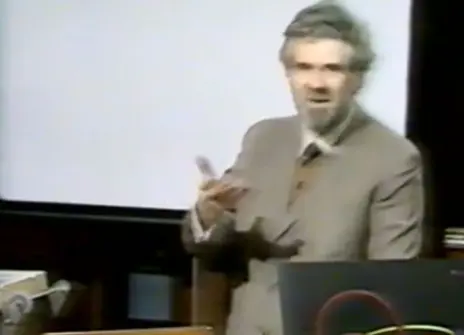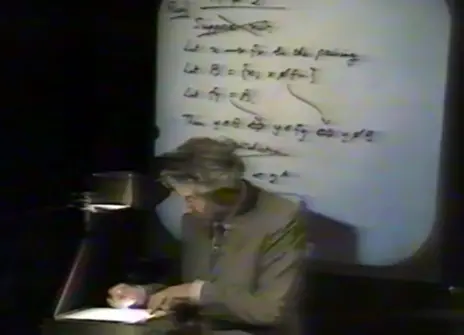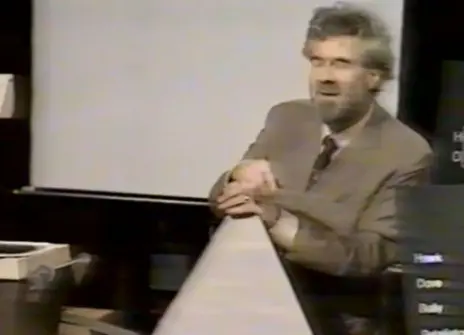Lecture 6 – Catastrophe and psychology
Moving from a simple model with one variable, up to situations involving thousands, Christopher Zeeman illustrates how catastrophe theory can plot states of stable and unstable equilibria across a three-dimensional surface. These multidimensional surfaces categorised as 'elementary catastrophes' visualise the point at which a system can shift suddenly from one state of equilibrium to another.
We are then introduced to how this field of mathematics can be extended into the world of physics, in particular to the study of light caustics (the bright patterns of light in rainbows, or rippling along the bottom of swimming pools) and astronomy.
Finally, Zeeman turns his attention to the field of psychology, where catastrophe theory is being used to model changes in mood, attention and decision making, specifically in the ‘fight or flight response. It is here that he hopes mathematics will aid science in reducing the ‘arbitrariness of description’.
About the 1978 CHRISTMAS LECTURES
Professor Christopher Zeeman presents the 1978 CHRISTMAS LECTURES on one of the oldest and most splendid endeavours of mankind.
As he explains in his original introduction to the series maths is at its core a paradoxical subject: "We are never quite sure whether it is an art or a science, whether we invent it or discover it, whether it is a man-made toy or a truth so universal that it is independent of the universe."
True to the tradition of the CHRISTMAS LECTURES, Zeeman places practical demonstrations at the heart of his presentations, using diagrams and pictures to reveal the nature and beauty of mathematical theorems and illustrating different types of mathematical modelling.
The first three lectures start with a pure point of view to ask 'What is the nature of mathematics?' before shifting to an applied point of view to explore the mathematics of nature.
These were the first CHRISTMAS LECTURES in its then 149-year history to be presented on the subject of mathematics and the series is still lauded as inspiring a new generation of mathematicians. Amongst the live audience was a budding young mathematician called Marcus du Sautoy who went on to present the Lectures in 2006 entitled ‘The num8er my5teries’.
Furthermore, the enthusiasm generated by the series led Professor Zeeman to establish the Ri’s Mathematics Masterclasses programme in 1981. They continue to enable thousands of young people across the UK to participate in the hands-on and inspired learning that is the hallmark of the CHRISTMAS LECTURES.






